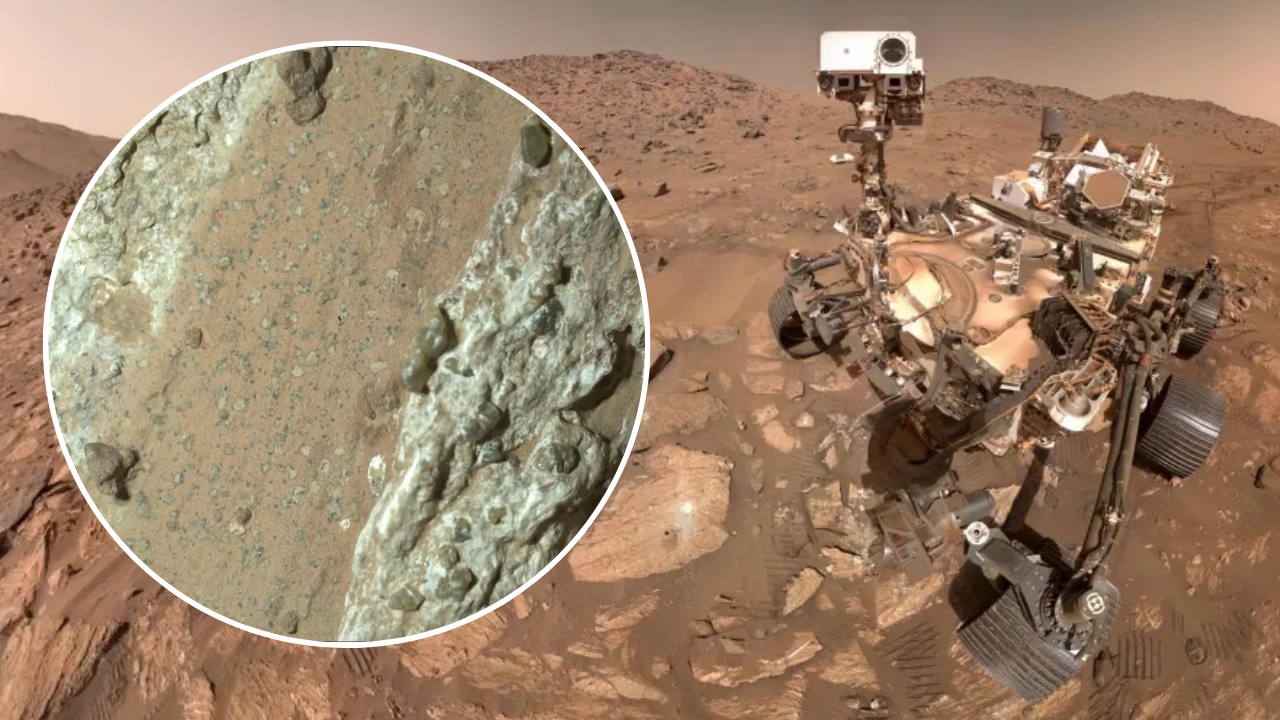NASA may have discovered a biosignature on Mars, but could China be in position to get crucial samples back to Earth first to make a definitive analysis?
NASA’s Perseverance team announced on Sept. 10 that it had found possible biosignatures in pieces of a Mars rock dubbed “Cheyava Falls” in Jezero Crater. But this is not conclusive. In order to determine if the intriguing minerals were produced by microbial metabolism or an abiotic process, samples collected by the rover would need to be delivered to Earth for further analysis, team members have stressed.
Perseverance collected the sample, named “Sapphire Canyon,” as a rock core in a cigar-sized tube. Such tubes are supposed to be brought to Earth for study by NASA’s Mars Sample Return (MSR) mission campaign. But that effort has been hit by delays and huge cost overruns, and now faces cancellation in President Donald Trump’s proposed 2026 federal budget that would slash NASA spending. With MSR delayed and now in limbo, it is China that will take the first shot at a historic mission to return the first samples from Mars.
You may like
China’s Tianwen 3 mission aims to launch in late 2028 and return Mars material to Earth in 2031. Landing site selection is still ongoing, but could the mission target Jezero Crater, where Perseverance is active, and attempt to collect similar samples?
Tianwen 3 plans to collect Martian samples using a drill, a scoop and a small drone, grabbing a total of around 1.1 pounds (500 grams) of material. Where it can land, however, depends on a number of engineering constraints.
A landing site for Tianwen 3 will be selected between 17 and 30 degrees North latitude. Jezero Crater lies at 18 degrees North, meaning it fits that criteria. Jezero’s altitude rules it out as a target, however.
Jezero’s floor is around 8,350 feet (2,600 meters) below Martian “sea level.” But Tianwen 3 needs to land even lower down, with the criteria being at least 9,840 feet (3,000 m) below notional sea level, according to a paper published in the journal Nature by scientists involved in the mission. This is because Tianwen 3 needs more atmosphere to help slow its descent onto Mars for a safe landing.
NASA has developed precision Mars landing technologies over decades, enabling the agency to target higher-altitude and more hazardous but scientifically rich sites such as Jezero.
There is also the matter of landing accuracy, typically described as a landing ellipse, or the elliptical area on a planetary surface that defines the range of possible touchdown spots for a spacecraft.
The landing ellipsis for NASA’s Curiosity and Perseverance rover missions was around 4.3 by 3.7 miles (7 by 6 kilometers). China has landed on the Red Planet once, sticking the landing on its first attempt in 2021, setting the Zhurong rover down successfully in southern Utopia Planitia as part of the Tianwen 1 mission. The same tech will be used for Tianwen 3, with an ellipse of 31 by 12.4 miles (50 by 20 km), meaning it will be harder to specifically target small, key areas — like the area in Jezero where Perseverance collected Sapphire Canyon
While Tianwen 3 will not be able to hit the same spots as NASA and Perseverance, the NASA rover’s recent discovery could inform China’s landing site, with Tianwen 3 perhaps seeking out similar clay-rich areas and possible former riverbeds, such as that in which the Sapphire Canyon sample was found. In the meantime, NASA could consider alternative approaches to getting the Perseverance samples back, if there is political will and adequate funding.

